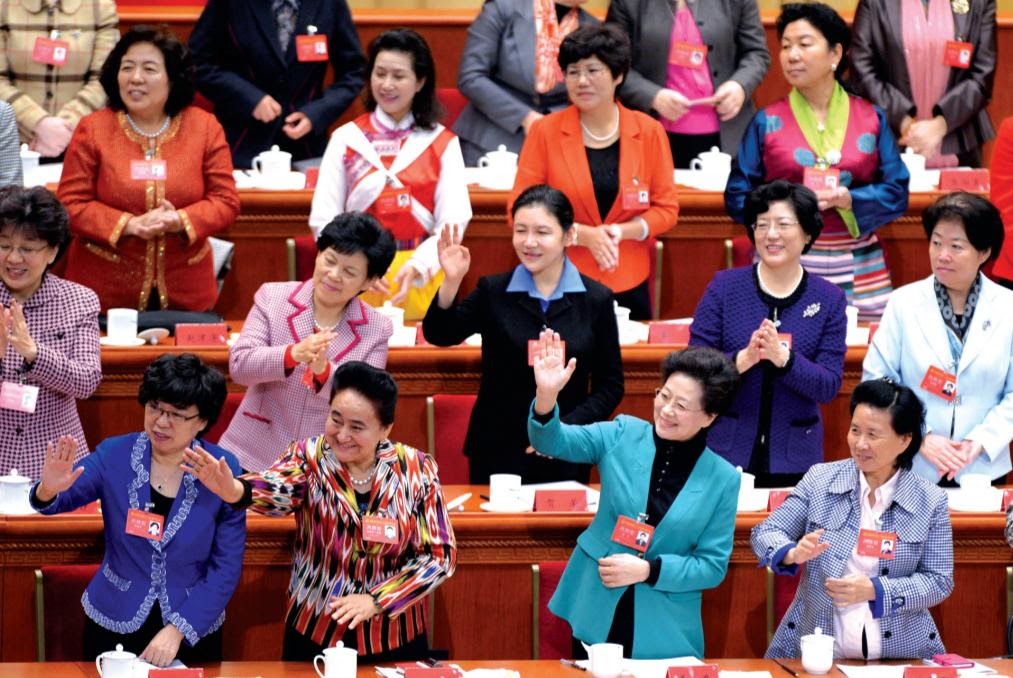Gender gaps in Chinese politics and science are still massive
While Chinese women have made notable strides in achieving social and economic parity in the past decade, significant gender inequality still persists in certain areas, including politics and science, according to a recent report released by the National Bureau of Statistics of China.

While Chinese women have made notable strides in achieving social and economic parity in the past decade, significant gender inequality still persists in certain areas, including politics and science, according to a recent report released by the National Bureau of Statistics of China.
Titled “Men and Women in Chinese Society — Facts and Figures in 2019,” the report (in Chinese) was published last week by the bureau’s social science and cultural development department, which collected relevant numbers with technical and financial support from the United Nations Population Fund (UNFPA).
As the sixth edition of its kind since its inception in 1995, the report examines the current state of gender parity in China from various angles, including the country’s sex ratio at birth, the division of household chores between husbands and wives, and the gender gap in political representation.
Here are three major takeaways worth highlighting from the report, which together constitute a dire reminder that China still has a long way to go before achieving full gender equality:
1. A preference for sons is still prevalent in China, especially when it comes to second or third babies
The report reveals that while the sex ratio at birth in China appeared to be falling, from a high of 121 boys born for every 100 girls to about 111.9 boys in 2017, it’s still considerably higher than the natural ratio decided by the World Health Organization, which hovers around 105:100.
The disparity is largely caused by a traditional preference for sons over daughters in Chinese families. To make things worse, since China abolished its decades-long one-child policy in 2015 and replaced it with a loosened one that allows all couples to have two children, many parents with one daughter have been using their second or third attempt at childbirth to have a son. The report found that the sex ratio for the additional child was significantly skewed, with the number for the third baby being over 148 boys for every 100 girls, which is likely a result of sex-selective abortions.
2. Chinese women still do way more housework than men, and this harms their careers
According to the report, Chinese women perform an average of nearly four hours of domestic unpaid work per day, which is more than double the amount of time put in by men. The situation is even more dire in rural areas, where the time women spend on chores around the house is almost three times that done by men.
The report also notes that the lopsided division of work is one of the main reasons cited by women when they quit their jobs. In 2018, more than 30% of the women who were jobless said that they had to give up their professional careers because of their domestic responsibilities.
3. Progress to close the gender gap in Chinese politics and science has been glacial
While Chinese women appear to be gradually bridging the gender gap in fields such as education and health, lack of female representation is still a significant problem in several areas, according to the report.
One notable failure is Chinese politics. Among all the delegates to the 13th National People’s Congress, China’s top legislature, and members of the 13th Chinese People’s Political Consultative Conference (CPPCC), the country’s “top political advisory body,” only about a fifth are women. There are also very few high-level female officials in local governments.
Women’s representation is equally dismal in science and technology. At the Chinese Academy of Sciences, the top scientific research institute in China, only about 7% of its employees are women, while the percentage of female scholars at the Chinese Academy of Engineering is less than 5%.






